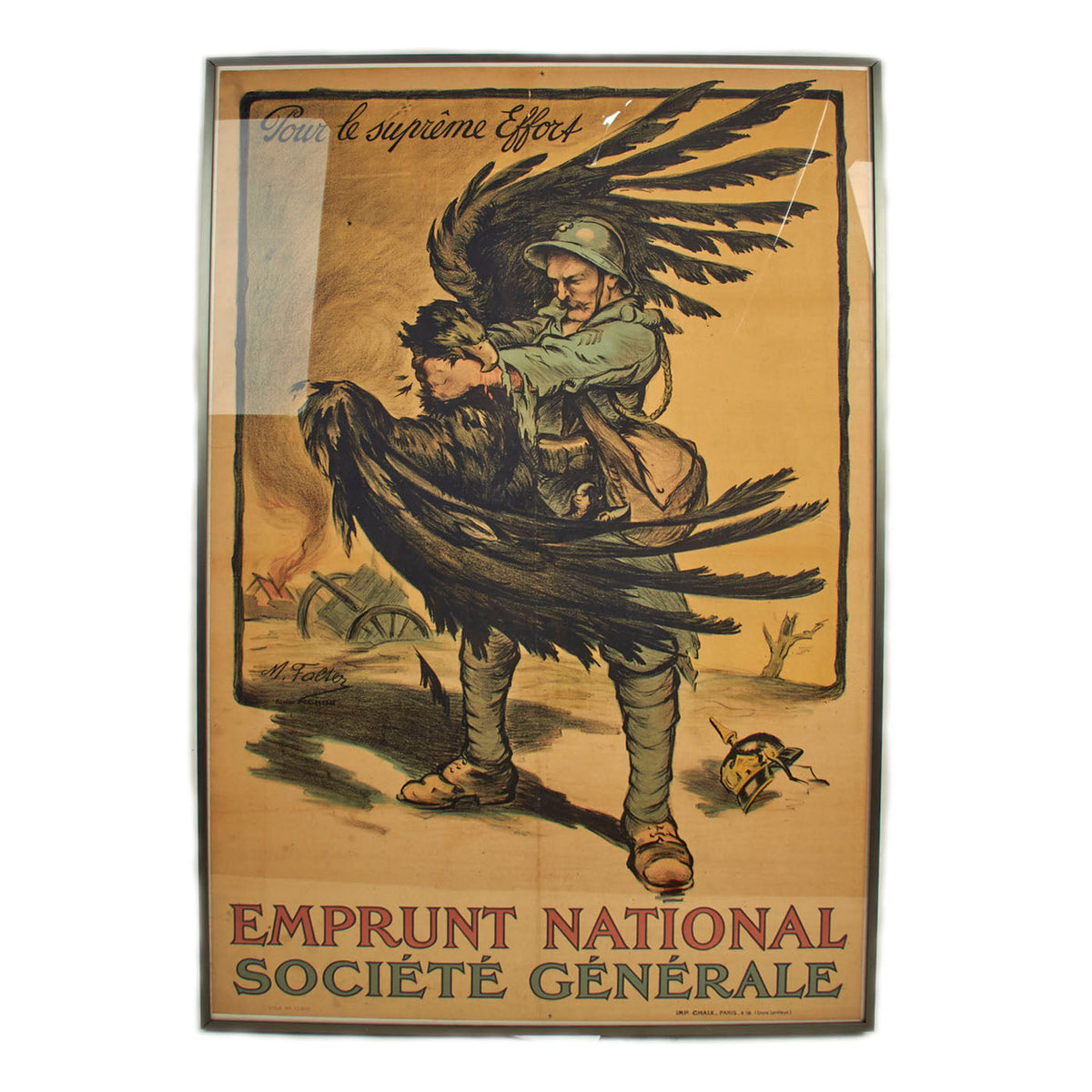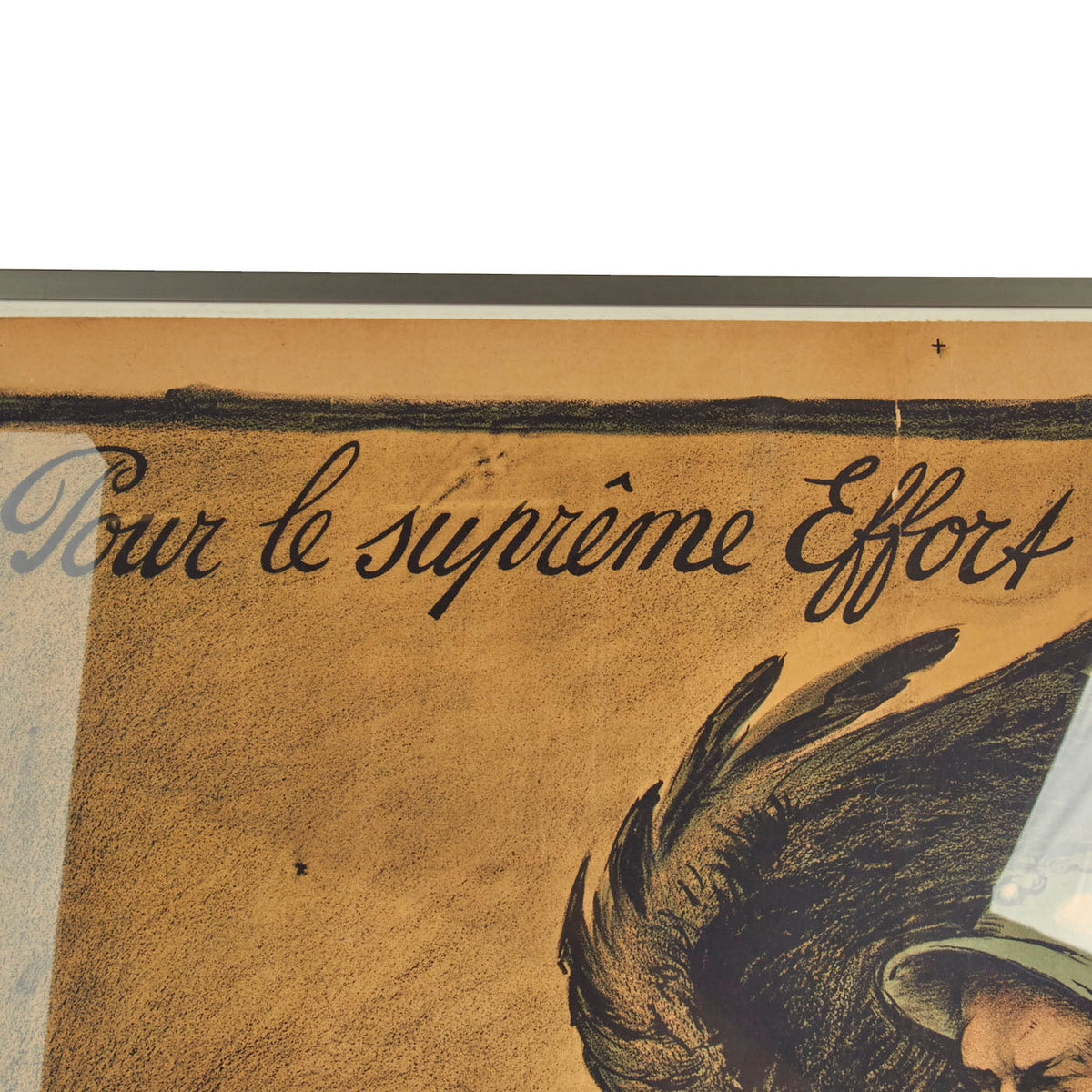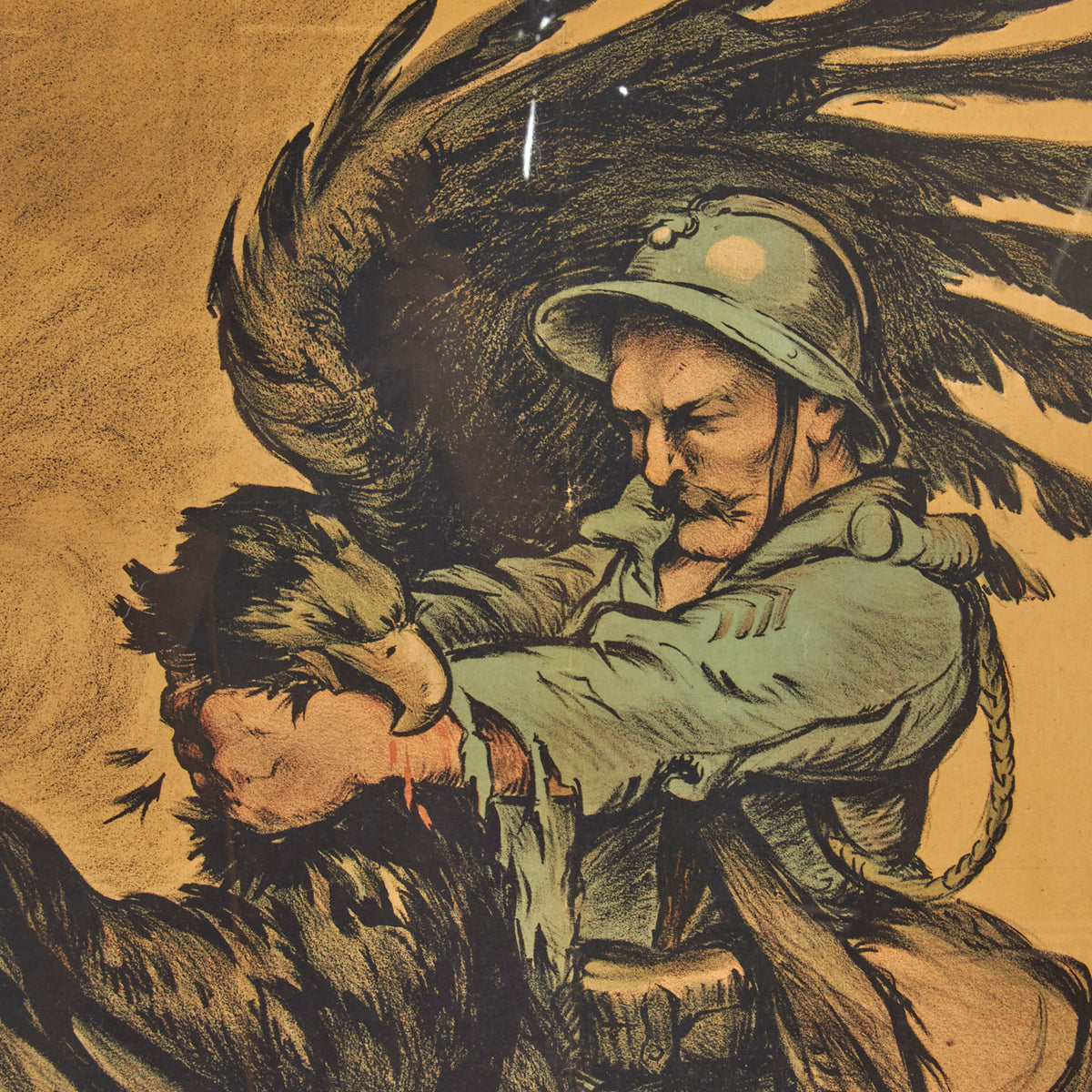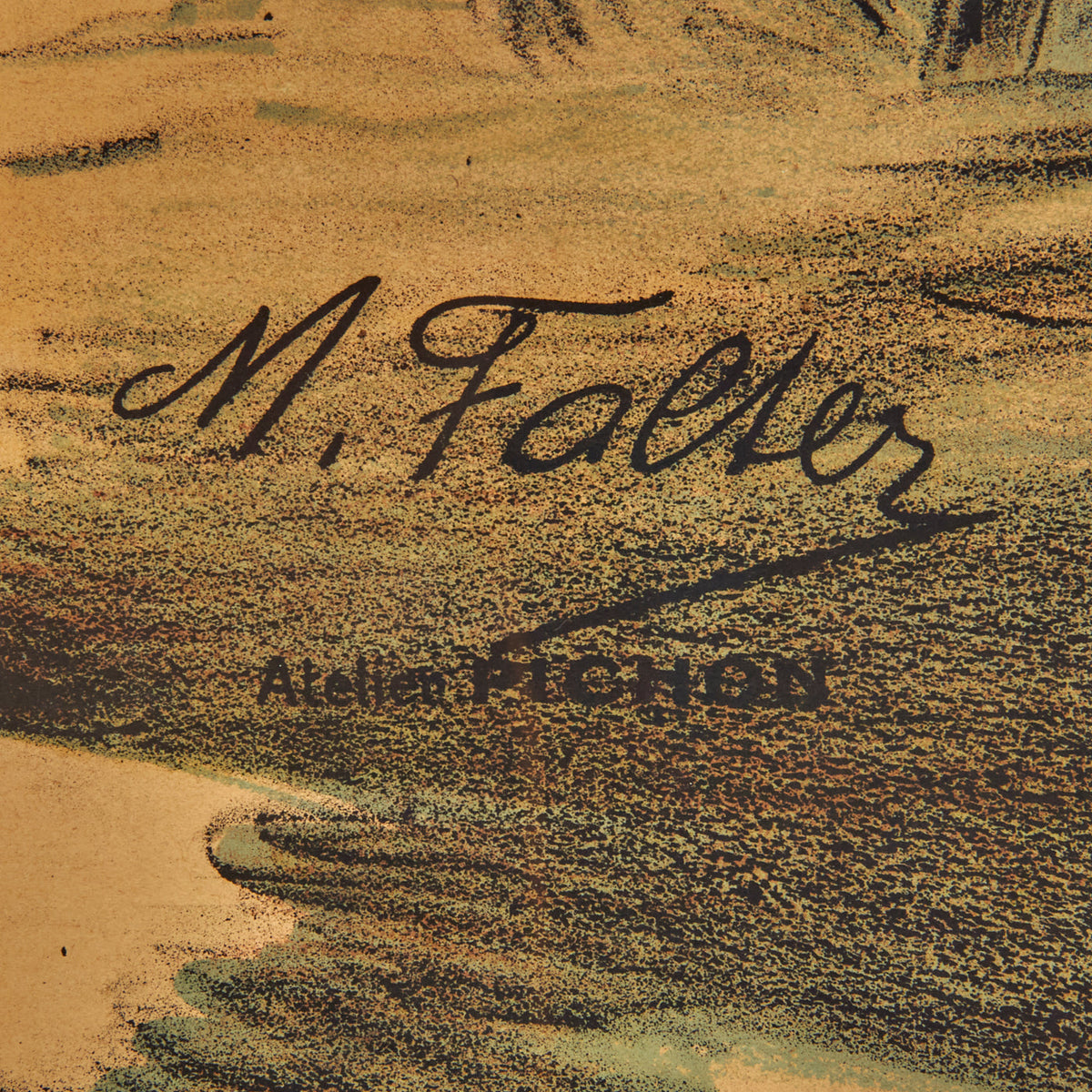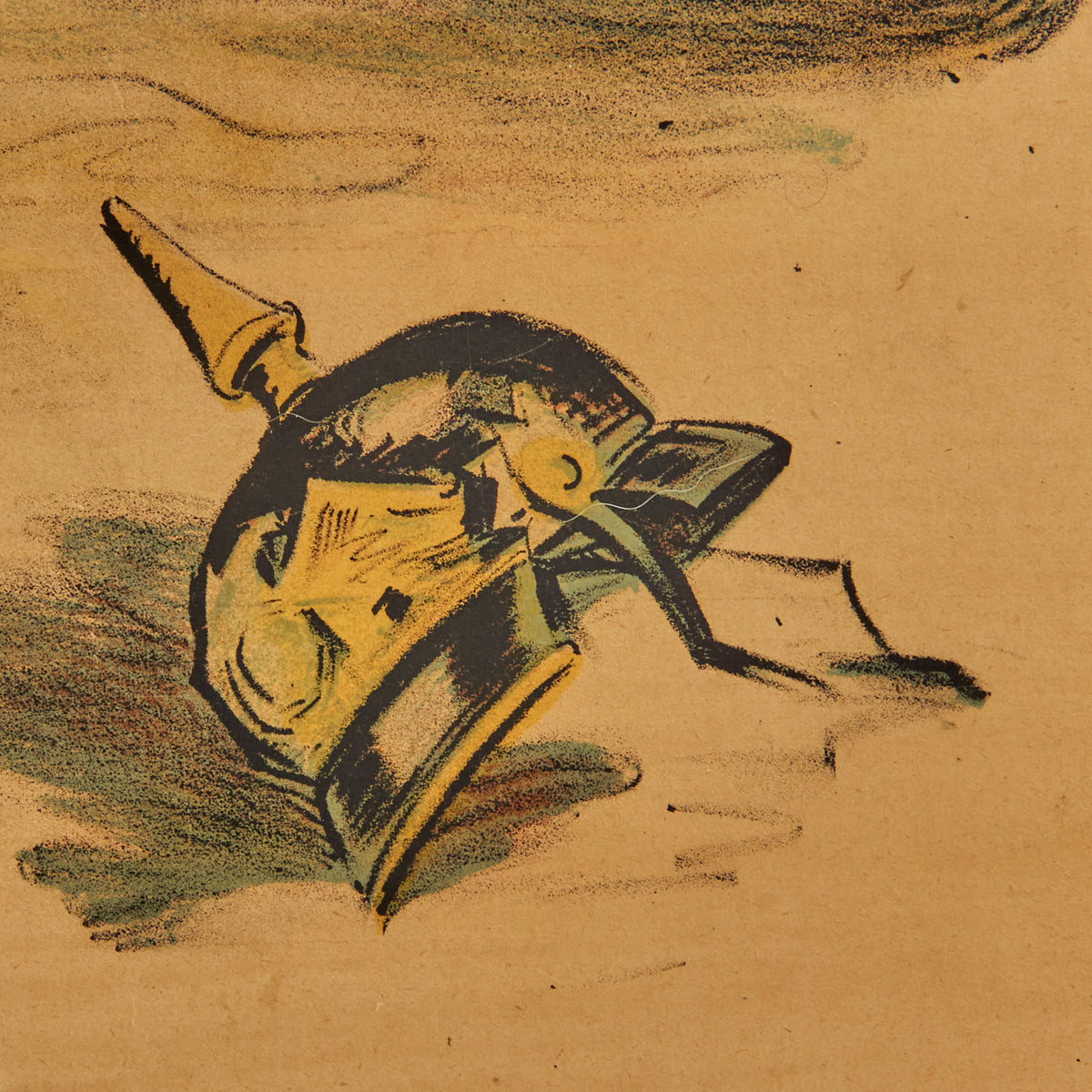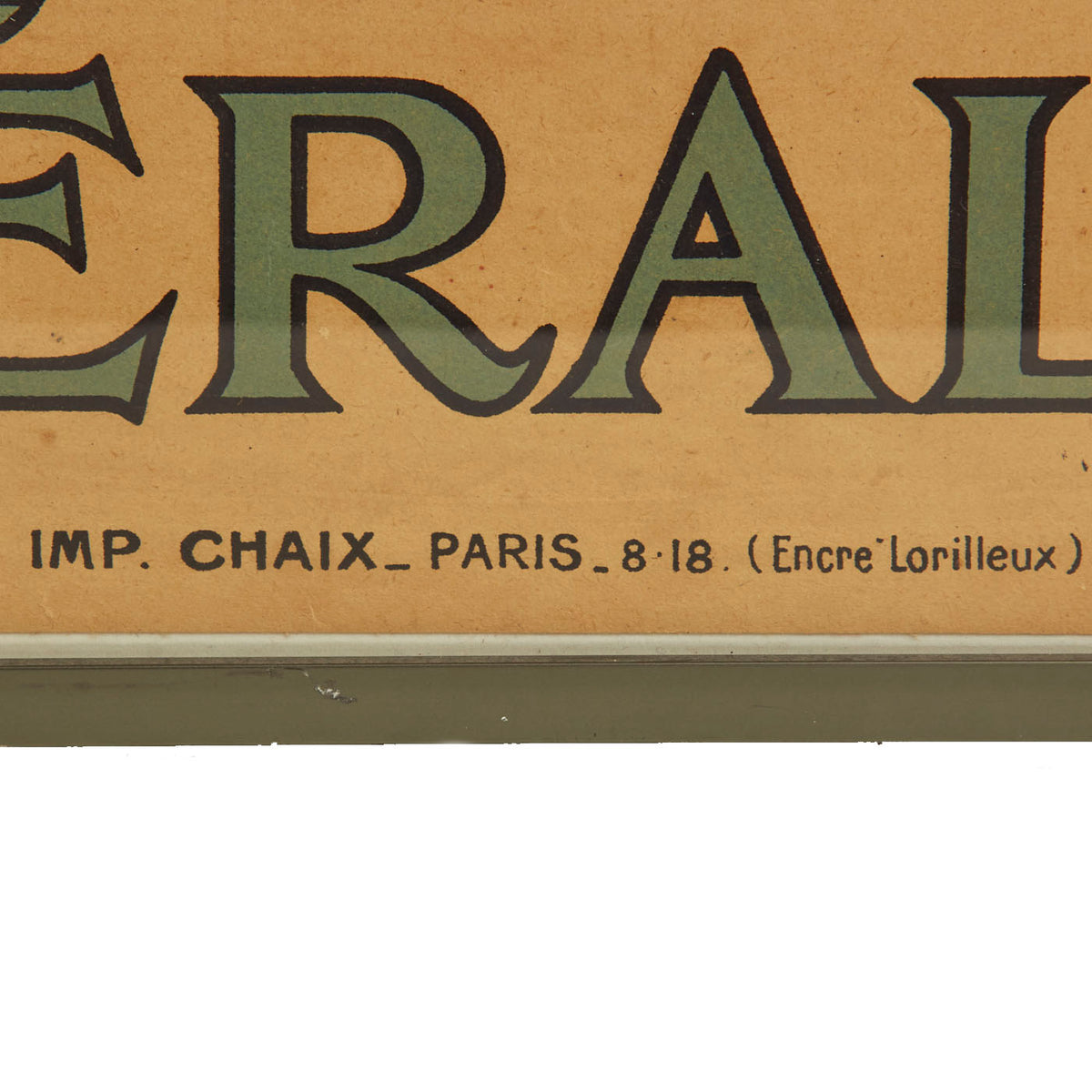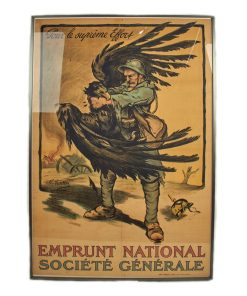Original French WWI Framed Société Générale National Loan Propaganda Poster – 30 1/2″ x 46 1/2″ Original Items
$ 995,00 $ 248,75
Original Item: Only One Available. During World War I, France was one of the Triple Entente powers allied against the Central Powers. Although fighting occurred worldwide, the bulk of the conflict in Europe occurred in Belgium, Luxembourg, France and Alsace-Lorraine along what came to be known as the Western Front, which consisted mainly of trench warfare. Specific operational, tactical, and strategic decisions by the high command on both sides of the conflict led to shifts in organizational capacity, as the French Army tried to respond to day-to-day fighting and long-term strategic and operational agendas. In particular, many problems caused the French high command to re-evaluate standard procedures, revise its command structures, re-equip the army, and to develop different tactical approaches.
Many French intellectuals welcomed the war to avenge the humiliation of defeat and loss of territory to Germany following the Franco-Prussian War of 1871. Only one major figure, novelist Romain Rolland, retained his pacifist internationalist values; he moved to Switzerland. After Socialist leader Jean Jaurès, a pacifist, was assassinated at the start of the war, the French socialist movement abandoned its antimilitarist positions and joined the national war effort. Prime Minister Rene Viviani called for unity—for a “Union sacrée” (“Sacred Union”); France had few dissenters.
However, war-weariness was a major factor by 1917, even reaching the army, as soldiers were reluctant to attack—many threatened to mutiny—saying it was best to wait for the arrival of millions of Americans. The soldiers were protesting not just the futility of frontal assaults in the face of German machine guns but also degraded conditions at the front lines and home, especially infrequent leaves, poor food, the use of African and Asian colonials on the home front, and concerns about the welfare of their wives and children.
The industrial economy was badly hurt by the German invasion of major industrial areas in the northeast. While the occupied area in 1913 contained only 14% of France’s industrial workers, it produced 58% of the steel, and 40% of the coal. Considerable relief came with the influx of American food, money and raw materials in 1917. The arrival of over a million American soldiers in 1918 brought heavy spending on food and construction materials. Labor shortages were in part alleviated by the use of volunteer and slave labor from the colonies.
The war damages amounted to about 113% of the GDP of 1913, chiefly the destruction of productive capital and housing. The national debt rose from 66% of GDP in 1913 to 170% in 1919, reflecting the heavy use of bond issues to pay for the war. Inflation was severe, with the franc losing over half its value against the British pound.
Produced in the final months of the war with artwork by Marcel Falter,, this poster shows a French soldier engaged in a fight with the black imperial eagle of Germany. The Prussian eagle was used frequently by French poster artists to symbolize German savagery.
Here, the artist illustrates the horror of German occupation by adding a burning village, abandoned gun, and spiked German helmet to the background. The very real and desperate fight between French and German troops in August 1918 is dramatized here as a ferocious eagle bites and attacks a French soldier, its large wings spreading beyond the border of the image. Walter Russell Bowie, an American Red Cross chaplain assigned to France during the war, wrote about this poster’s impact on the streets of France in 1918: “For many months France had been trying to drive the Germans back. For a long time she had been fighting that great, black eagle whose wings threw a shadow over all the land. France . .. had fought until it seemed as though all the strength of Frenchmen was exhausted, and as though it was not possible to try any more. But that poster was meant to make them remember that they must still keep on. There was to be one last, great try. The eagle was not yet choked. France must not let go until the work was finished.”
The 30 1/2″ x 46 1/2″ poster is in excellent condition but was unfortunately glued to a foam poster board when it was being framed. We made no attempts to try and remove the poster as doing so will only damage it. In the frame it measures 32″ x 48″.
Comes more than ready for display!
Fast Shipping with Professional Packaging
Thanks to our longstanding association with UPS FedEx DHL, and other major international carriers, we are able to provide a range of shipping options. Our warehouse staff is expertly trained and will wrap your products according to our exact and precise specifications. Prior to shipping, your goods will be thoroughly examined and securely secured. We ship to thousands clients each day across multiple countries. This shows how we're dedicated to be the largest retailer on the internet. Warehouses and distribution centres can be located throughout Europe as well as the USA.
Note: Orders with more than one item will be assigned a processing date depending on the item.
Before shipping before shipping, we'll conduct a thorough inspection of the items you have ordered. Today, the majority of orders will be delivered within 48 hours. The delivery time will be between 3-7 days.
Returns
The stock is dynamic and we cannot completely manage it because multiple stakeholders are involved, including our factory and warehouse. So the actual stock may alter at any time. It's possible that you may not receive your order once the order has been made.
Our policy is valid for a period of 30 days. If you don't receive the product within 30 days, we are not able to issue a refund or an exchange.
You can only return an item if it is unused and in the same state as the day you received it. You must have the item in its original packaging.
Related products
Uncategorized
Uncategorized
Uncategorized
Uncategorized
Uncategorized
Uncategorized
Uncategorized
Uncategorized
Uncategorized
Uncategorized
Uncategorized
Uncategorized
Uncategorized
Band of Brothers ORIGINAL GERMAN WWII Le. F.H. 18 10.5cm ARTILLERY PIECE Original Items
Uncategorized
Uncategorized
Australian WWII Owen MK1 Machine Carbine SMG Custom Fabricated Replica with Sling Original Items
Uncategorized
Uncategorized
Angolan Rebel 1970s era 60mm Inert Display Mortar from Angolan Civil War Original Items
Uncategorized
Uncategorized
Uncategorized
